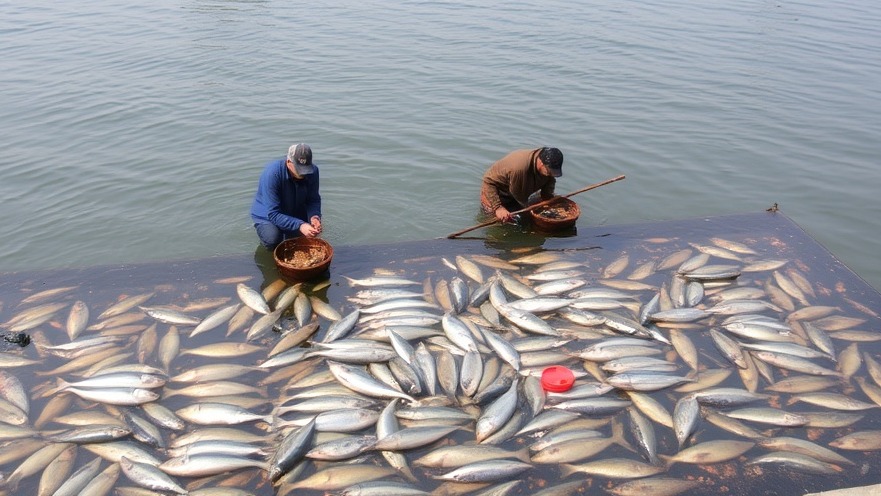
Understanding the Contaminants: Dioxins and PCBs
As we navigate the complexities of dietary choices, one urgent question looms for those mindful of their health: Which fish option is better—wild-caught or farmed? While fish is often heralded for its omega-3 fatty acids and nutritional benefits, concerns about environmental toxins, such as dioxins and PCBs, are prevalent. Research indicates that these industrial pollutants have a lingering presence in our diet, primarily from fish. The U.S. Environmental Protection Agency (EPA) has set strict tolerable limits on dioxin intake, suggesting that each individual should consume less than 0.7 picograms per kilogram of body weight daily. Unfortunately, regular fish consumption can rapidly exceed this limit, particularly with certain species often found in grocery stores.
In 'Are Environmental Toxins Lower in Wild-Caught or Farmed Fish?', the analysis details the significant health risks of consuming contaminated fish, prompting us to explore the implications for our dietary choices.
The Lurking Threat: Fish Contamination
An alarming aspect of many fish varieties, particularly farmed salmon, is their elevated levels of toxic pollutants compared to their wild counterparts. For instance, farmed salmon has been shown to contain significantly higher PCB levels—over ten times more than wild-caught options. This isn't merely an issue of taste; it's a matter of health, as cumulative exposure to these toxins can be detrimental, amplifying the risk of long-term health problems.
Evaluating the Nutritional Trade-off
While it’s easy to fall into the pattern of consuming fish for its omega-3s, it’s imperative to weigh the biochemical benefits against the health risks posed by contaminants. In dietary guidelines, we often see a recommendation of consuming no more than one serving of fish per week, especially in regions with known high contamination levels. This is to mitigate exposure to these harmful chemicals, a fact that underscores the importance of mindful eating practices.
The Farm-Raised vs. Wild-Caught Debate
So why does farmed salmon lead the contamination charts? One critical factor is the fish oil used in their feed, which can transfer pollutants to the salmon itself. Studies show that every toxin evaluated—from PCBs to dioxins—was consistently found in higher concentrations in farmed salmon compared to the wild variety. As a result, wild-caught fish, although often more expensive, can be a more prudent choice for those prioritizing health.
The Importance of Accurate Labeling
To combat confusion among consumers, transparent labeling is paramount. Unfortunately, seafood fraud, which can see farmed salmon sold as wild-caught, creates an added layer of complexity. Investigations have revealed that up to 43 percent of salmon tested across the U.S. were mislabeled. This means that making informed dietary decisions is increasingly challenging, especially for consumers trying to avoid toxic exposure.
Navigation Through Toxic Waters: Reducing Exposure
For those of us actively seeking to maintain a healthy lifestyle, avoiding fish with high levels of contaminants is essential. Opting for wild-caught varieties can make a significant difference, not only in terms of potential exposure to toxins but also for supporting sustainable fishing practices. By being knowledgeable about what to look for—labels, sourcing, and certifications—we can take proactive steps toward healthier eating habits.
Conclusion: Making Informed Choices for Healthy Aging
As we age, the significance of nutrition becomes increasingly vital in our journey toward longevity and maintaining overall health. It's essential to prioritize both the quality of our food and its source. By carefully evaluating our fish choices and leaning towards wild-caught options, we take important strides in safeguarding our health against environmental toxins. Join us in advocating for better labeling practices and raise awareness about the importance of knowing what’s on our plates. Remember that informed decisions lead to healthier outcomes.
 Add Element
Add Element  Add Row
Add Row 




Write A Comment